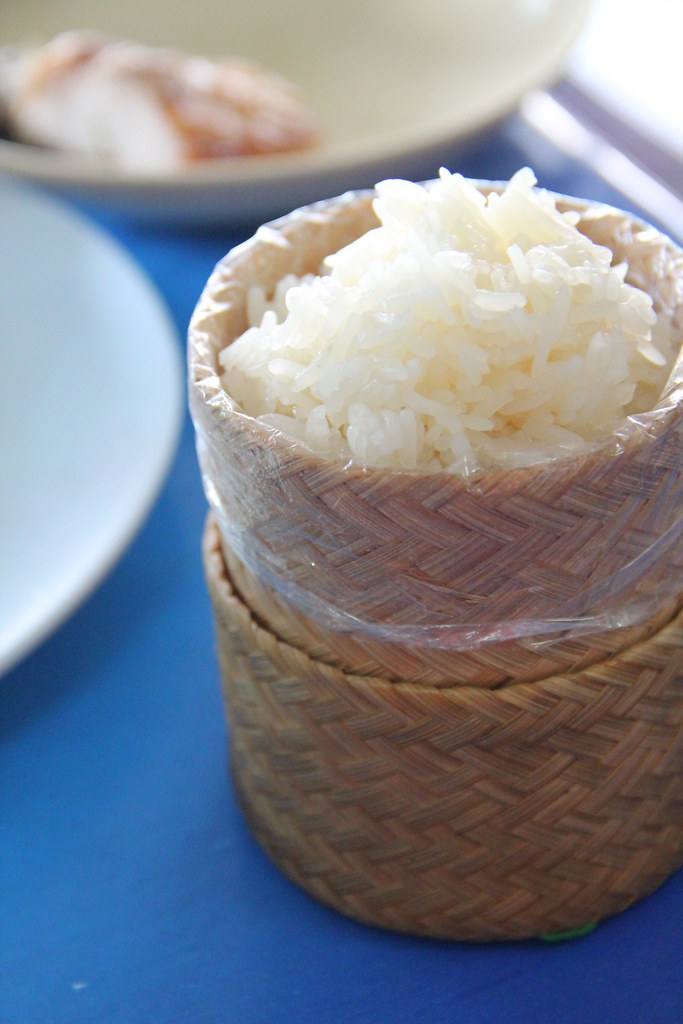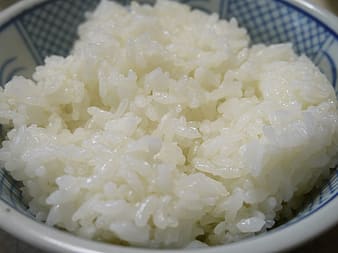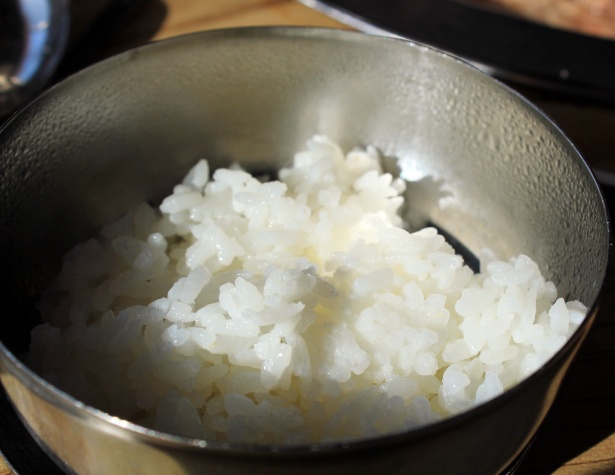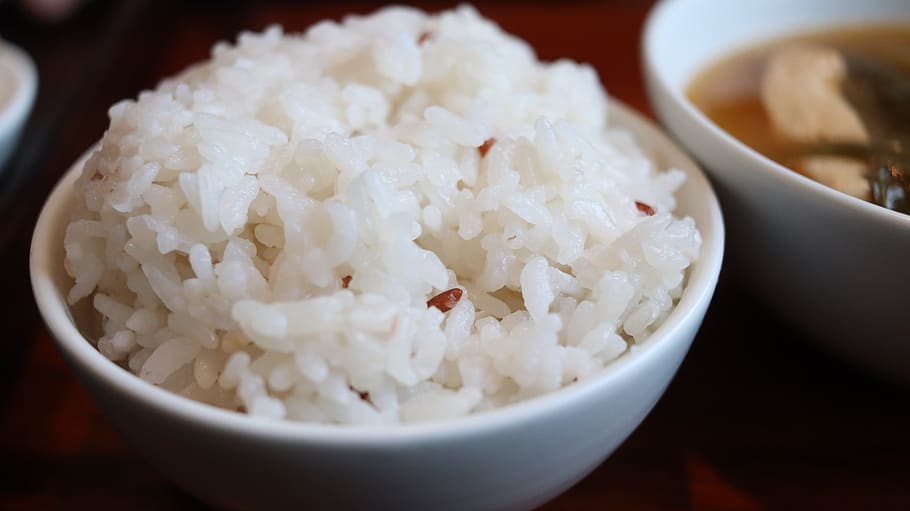Glutinous Rice Is Good for Health
The glutinous rice or sticky rice is a variety of rice that has been cultivated in Asia for 4,000 years and can be bought in any Asian grocery store. The complex carbohydrates it contains are in the form of starch, which has a special structure that gives it a sticky, fluffy consistency.
Slightly lower in carbohydrates than white rice, its protein intake is also low (2%). Glutinous rice has a very mild flavor and is suitable for both sweet and savory dishes.
Glutinous rice: what is it?

Glutinous rice is sticky rice that has a more pearly appearance than normal Thai rice. It is a variety of rice that lends itself well to recipes that require rice that “sticks” without being gelatinous.
The big difference with conventional rice is that it is steamed and then soaked for 5 to 12 hours.
Amazingly, the sticky rice that forms the basis of the Chinese and Southeast Asian diet has also been used by Chinese builders for 1,500 years. Combined with lime, it made a very good mortar for building walls, etc., thanks to the amylopectin it contains (one of the components of starch).
Characteristics of glutinous rice

Glutinous rice has the particularity of being very sticky when cooked.
This property is due to the composition of its starch (complex carbohydrate of rice) which is very rich in amylopectin, one of the constituents of starch that makes rice sticky.
Good to know: for people with gluten intolerance, glutinous rice, like normal white rice, is gluten-free.
Comparative table of nutrients for 100 g of sticky rice and 100 g of cooked white rice
| Nutrients | Average content per 100 g of cooked white rice | Average content per 100 g of cooked sticky rice |
|---|---|---|
| Protein (g) | 2,49 | 2,02 |
| Carbohydrates (g) – of which starch (g) – of which simple sugars | 28,7 26 0,09 | 21,09 21 0,1 |
| Fat (g) | 0,9 | 0,19 |
| Fibres (g) | < 1,1 | 1 |
| Sodium (mg) | 117 | 5 |
| Potassium (mg) | 29,9 | 10 |
| Calcium (mg) | 8,17 | 2 |
| Cholesterol (mg) | 0,3 | 0 |
| Vitamin C (mg) | 0 | 0 |
| Water (g/100 g) | 66,5 | 76,63 |
| Energy (kcal/100 g) Energy (KJ/100g) | 134 569 | 97 405 |
Source: USDA (United States Department of Agriculture).
Nutritional benefits of sticky rice

Glutinous rice has the following nutritional interests:
– Rich in slow carbohydrates known as complex carbohydrates which provide energy over the long term, and are therefore very useful when practicing physical activities.
– High satiating power, thus avoiding afternoon cravings and nibbling.
– The moderate glycemic index (64) like white rice, which is suitable for diabetics.
Good to know: foods rich in amylopectin have a higher glycemic index than foods rich in amylose (another component of starch). Wheat contains on average 25% amylose and 75% amylopectin like most commonly consumed rice. The way rice is cooked will also have an impact on the glycemic index beyond its amylopectin content. The starch in rice cooked in water will be gelatinized, so easily converted into glucose by digestive juices.
Glutinous rice: how to prepare it?

Gooey rice is not prepared at the last minute. Before cooking it, it should be left to soak ideally overnight or at least 4 to 5 hours for white sticky rice.
The next day, the rice is rinsed under tap water at least three times. Once drained, the rice is placed in a steaming basket (or a covered bamboo basket placed on top of a pot of boiling water) to cook for 30 minutes.
As soon as it is cooked, the rice should be left to rest for a few moments, at which time it will be very shiny.
You can, of course, use a rice cooker.
Cooked sticky rice can be used in many ways:
– As an accompaniment to a chicken wrapped in lotus leaves or any other meat.
– Mixed with shiitake mushrooms, fragrant mushrooms very much eaten in Asia.
– In a cake like the one prepared for the Chinese New Year: the rice cake with eight treasures (with dried fruits and oilseeds).
– In dumplings coated with boiling sweet coconut milk, eaten once cooled and accompanied by fresh or cooked fruit.
Good to know: starch gelatinizes when cooked in the presence of water, a phenomenon clearly visible by the swelling of rice when cooked with water, as opposed to the steaming of sticky rice, which swells little.
If you like this post, you can read some more interesting health talks blog post here:
- What is Organic Food All About
- Anti-Cellulite Foods: How It Works
-
Flax
Seed: The Partner for Your Health and Slimming Needs
Virtues of Sunflower Seeds - What Is Adipose Cellulite and How to Deal With It?
- What Is Aqueous Cellulite and How to Deal With It?
- What Is Fibrous Cellulite and How to Deal With It?
Remember to leave your comments in the section below.




Thank you so much for ALL this interesting info.
Unfortunately on the packet of Glutinous rice instructions ,on how to cook it, have been probably translated by soneone who doesnt know because it says to boil it eith double amount of water after rising the rice thoroughly…hhmmm!! Not good !!
Many times these asian products have wrong translations which srews the item.
Its so important to double check !
Thank u
the article is useful and interesting, if you need a reference, you can go here
http://ners.unair.ac.id/site/index.php/news-fkp-unair/30-lihat/936-ini-berbagai-pilihan-sumber-karbohidrat-yang-lebih-sehat-dari-nasi